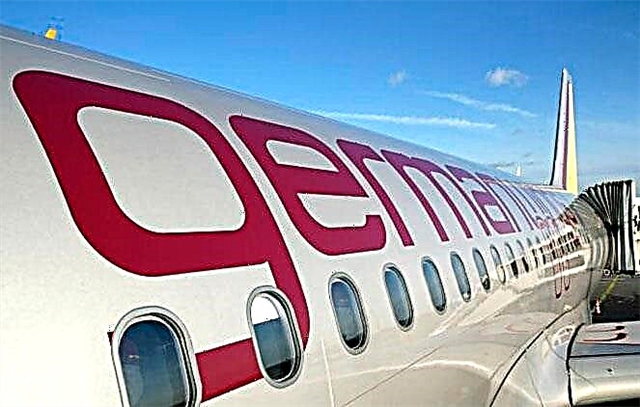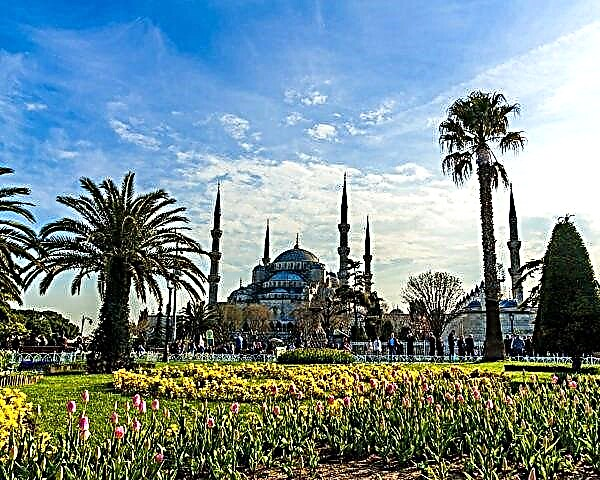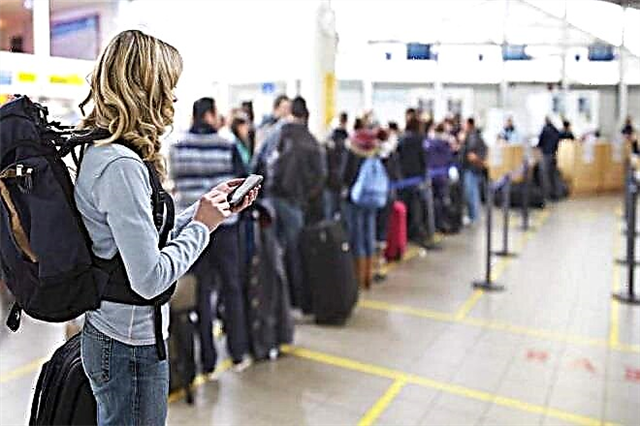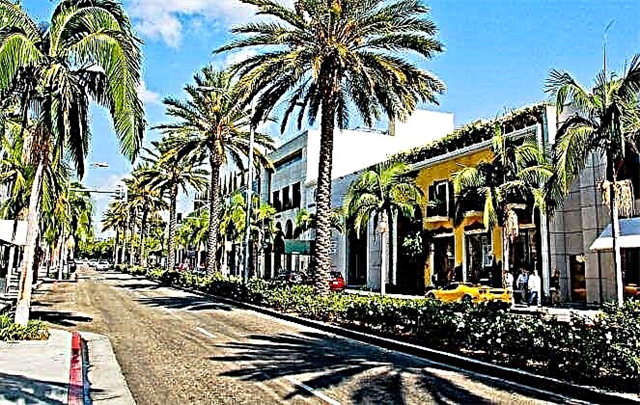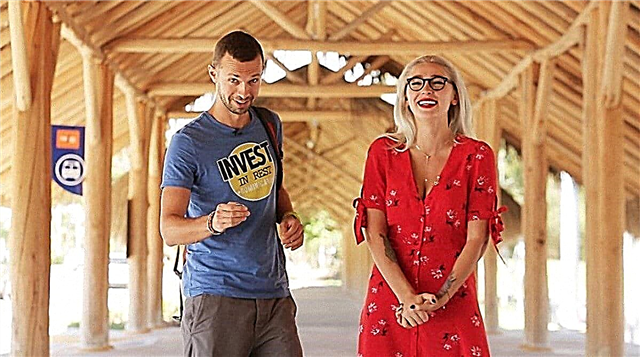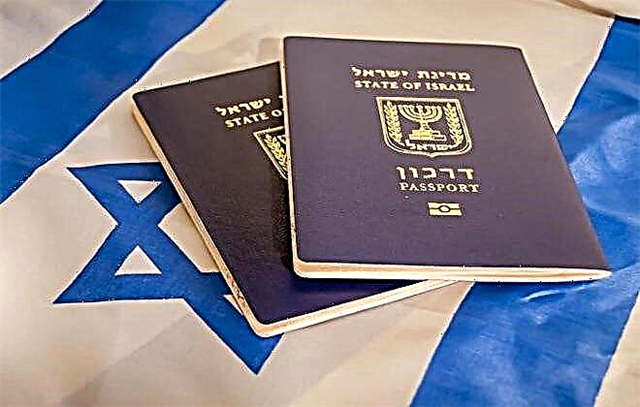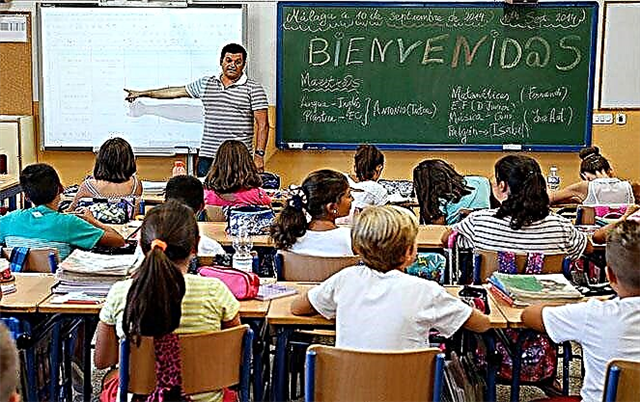The choice of the Kingdom of Spain as a destination for emigration is influenced by many factors: comfortable climatic conditions, a rich history of the country, a huge number of attractions and a friendly population. Children who move here with their parents can take advantage of the excellent opportunity to get a quality education at one of the local schools, learn the language, thereby increasing their chances of entering a higher educational institution. However, first you need to find out what schools in Spain are, how you can enter them and what are the features of accepting applications from foreign citizens.

How the school system works in Spain
The whole process of education and upbringing of the younger generation in Spain is divided into several stages:
- preschool education (Educación Infantil);
- primary school (Educación Primaria);
- high school (Educación Secundaria Obligatoria);
- high school (Bachillerato);
- higher education (Educación superior).
Only the first and the last two steps are optional. However, it should be borne in mind that in order to enter school, it is still better for a child to undergo training in a preschool institution, all the more it is necessary if you want your child to study in a specific educational institution.
Primary and secondary schools are collectively referred to as "basic". It makes sense to go to the senior level only if you plan to enter a university.
Secondary education in Spain has a number of features:
- the academic year does not consist of quarters, but of terms;
- at the end of each trimester, students take exams, and if they fail more than two subjects, they have a chance to stay for a second year;
- desks in classrooms are designed for only one student;
- for music lessons, every student must have a flute;
- all lessons are 55 minutes long;
- knowledge is assessed on a 10-point system;
- the subject "Religion" is included in the curriculum. However, there is an alternative for schoolchildren and their parents: instead of this subject, they can choose any other, which they will attend while other children receive spiritual education.
The academic year does not begin on September 1, as is customary, say, in Russia, but closer to the middle of this month. This is usually the closest Monday to September 15th. Solemn rulers or other events are not held here on the first day of classes - children just come to school, sit at their desks and begin to gain knowledge.

It is noteworthy that the composition of the classes in Spanish schools is changed every 2 years. This is done in order to make it easier for children to enter society, to help them find new friends, while not forgetting to value old ones.
Buildings of educational institutions, as a rule, are particularly reliable, so parents can be completely calm about the safety of their child. In addition, only those persons who are declared on a special list of "pickers" can take children under 12 years old from school.
The school principal is a key figure in the educational process. As a rule, he knows by sight each student and his parents. Schoolchildren can tell the principal about any of their problems and get support from him.
Types of Spanish schools
Whether your child will study in Benidorm or Madrid, first you have to decide on the type of educational institution in which you will send your child. There are 3 types of schools in Spain:
- state (colegios publicos) - are free for all categories of citizens. However, parents will have to purchase textbooks at their own expense and cover ongoing administrative costs during the year. Public schools are usually attended by children from families with different levels of income, and the number of people who want to study in them is so great that the classes are sometimes overcrowded. For Russian children, this category of educational institutions will be inaccessible if they do not yet have resident status and permanent registration;
- semi-state (colegios concertados) - partial funding of these schools is carried out by local authorities or the Catholic Church. Despite this, children receive a secular education in such schools;
- private (colegio privados) - funded by student contributions. They are the most popular among expats.
Primary school
Admission to the first grade of primary school is scheduled for when the child turns 6 years old. At this stage, he will have to unlearn 6 classes (up to 12 years). All these years, one teacher has been teaching schoolchildren, who conducts lessons in Spanish, mathematics, natural history, music and others.

Children begin to learn foreign languages from the age of 8. But they acquire reading and writing skills even in kindergarten, in preparatory courses.
It is noteworthy that primary schools do not set themselves the task of teaching pupils to write beautifully - calligraphy is not a mandatory requirement here. The main thing is that the child has learned the material, and whether he will write in block letters or in capital letters, does not matter.
The school day is divided into two parts. In the morning, the children are brought in for 2-3 hours, at lunchtime they are taken away so that they can eat and rest, and then they are brought back for another 2-3 lessons.
Primary school education ends with final exams, after which the child is transferred to the next educational level.
High school
Education in secondary school lasts 2 years - from 12 to 14 years old. Teaching here is already carried out by different teachers, and the list of subjects is becoming much wider. In the last year of study, schoolchildren are given the opportunity to choose one of three specializations:
- artistic;
- natural Sciences;
- humanitarian.
The chosen direction will be deepened and carefully worked out at the next stage - in high school, which is preparation for entering the university.
After graduation from high school, exams are also expected.
Old school
If the teenager's further goal is a university in Alicante or in any other city in the country, it will not be possible to avoid high school education. Here schoolchildren study from 14 to 16 years old. These two years of study in Spain are called Bachillerato. This stage of training is not mandatory, but it is simply necessary for future applicants.
Bachillerato includes 6 key training areas:
- art;
- stage skills;
- economics / management;
- Social sciencies;
- technologies;
- natural Sciences.
However, not all educational institutions provide the opportunity to study in these specialties, so students often have to change schools in order to be able to study the disciplines they are interested in.

At this stage, it is compulsory to study foreign languages - English and Spanish (in Barcelona - Catalan), philosophy, history, religion. In addition to this, the student will have to add two more subjects to the program of the university - for example, Latin or chemistry.
The certificate that high school graduates will receive corresponds to the British GCSE - General Certificate of Secondary Education. It allows you to apply for admission to a university in any country in Europe, including the UK.
Private schools
Private schools in Spain are distinguished by a higher level of equipment, discipline and comfort, but also rather high prices. Perhaps that is why private schools occupy leading positions in the ranking of the best educational institutions in the country.
Private include campuses, boarding houses and foreign schools. According to the latest estimates, the leaders among such educational institutions are:
- Colegio Lauaxeta, located in Vizcaya.
- Montessori School in Girona.
- Caxton College (Valencia).
A significant part of their students are foreigners. A distinctive feature of these educational institutions is the use of an individual approach to each student, the development of his talents and the formation of practical skills. Most often, each such school can offer its own unique teaching methodology, which should be known in advance.
Especially popular are American or English schools, which focus not only on teaching methods, but also on the study of the English language, in particular, its history. The following institutions are in great demand:
- Gresol International School - located in Barcelona, offers its pupils training in the American educational system. Graduates are fluent in three languages: English, Spanish, Catalan;
- French College (Barcelona) - all staff here are native French;
- Benjamin Franklin School (Barcelona) - teaching in 4 languages. Graduates receive an American diploma and a Spanish Bachillerato certificate. Since 2021, the school has been issuing an international bachelor's degree diploma to its students, which opens the doors of all universities in the world for them.
- Swans School is the oldest international school (Malaga, Marbella), offering education for children from 3 to 16 years old according to the British program.
Boarding schools
Another type of organization of the educational process in a Spanish school is a boarding house. Such schools are especially popular among foreigners, since they provide not only the opportunity to study at a very high level, but also accommodation in comfortable, fully equipped hostels.
All subjects are mainly taught in English. Only selected courses and electives are taught in Spanish. The number of students in the classes is small, which allows the teacher to control how each of them learned the material.
Such schools are divided into 2 types:
- full board;
- partial boarding (the child lives on campus several days a week).
Most often, these institutions are private and specialize in religious, sports or multilingual education. Some boarding schools teach their pupils according to the British program, others according to the Spanish, and still others adhere to the American education system.
How to go to school
The enrollment of children in state educational institutions depends on their place of residence and the "workload" of the school. For this reason, it is necessary to start solving this issue at the beginning of March. It was during this period that the Open Doors Days began to be held, which sometimes last until the end of spring. It is better to visit several educational institutions at once, inspect the building and classrooms, the dining room, find out what electives will be offered to children. During the excursion, you will have the opportunity to ask any questions to the teachers and the administration.

However, you need to be prepared for the fact that even if you find a suitable school, this does not mean that you will be accepted into it. Spain is a fairly popular destination among expats, so there will be a lot of people who want to get to a budget place.
In order for your plan to be crowned with success, you need to prepare the following package of documents in advance:
- 2 photos;
- a certificate confirming the presence of a residence permit in the Spanish territory - it can be taken from the city administration;
- copy of the passport of the child and parents;
- a copy of the child's birth certificate;
- copy of parental NIE;
- a medical record with vaccinations - it must be certified by a pediatrician in a Spanish clinic.
Prepared documents should be submitted to the education department at your place of residence. Together with them, you need to provide a written justification of why you chose this particular educational institution.
If space is limited, you can try during the Open House to meet with parents whose children are already in this school and ask them to introduce you to the administration as their relatives.
The fact is that in Spain it is customary to accept brothers and sisters, even if they are distant ones, in one educational institution. Nobody will demand confirmation of kinship, and this will help you get a place in the school that interests you. Alternatively, you can try to look for Russian schools - the chances of getting your child there for Russian migrants are very high.
It is much easier to enroll in a private school. The main thing here is that you have enough financial resources to teach your child at your own expense. Of the documents, only the identity card of the student and the parents is required. In this case, no registration and no application to the education department will be required from you.
How much does it cost to study at a Spanish school
Free education, including for children of immigrants, is provided only in public schools. But in this case, you will need a certain amount for expenses that arise during the year, for example, for textbooks, extracurricular activities. In general, you will need about 100-300 euros per year.
In mixed educational institutions, although education is considered free of charge, parents expect a monthly contribution, which they must make on a voluntary basis (in fact, it is strictly compulsory). The amount of payments can also fluctuate between 100 and 300 euros, but not for a year, but for a month. Moreover, additional costs must be added to this amount, as in the previous case.

Education in private schools is carried out exclusively on a paid basis. International educational institutions issue invoices for € 500-700 per month. But this does not include accommodation, payment for various events and meals. In boarding houses and half board, the amount of expenses for one academic year can be up to 1,500 euros / month.
Ranking of the best schools
The Spaniards begin to select an educational institution for their child long before the moment comes to sit down at the school desk. In this regard, the Spanish edition of El Mundo annually compiles a list of the most popular and best-proven schools:
- San Patricio is a mixed multilingual religious private school. Location - Madrid. In 2021, the Bachilerato Artistico (Diploma in Arts) was established here. The educational institution has its own conservatory, a canteen, and a music school. The training is conducted in English, German and French. The examination for the level of proficiency in them is taken by the University of Cambridge.
- Montserrat is a mixed semi-public multilingual religious school. Recognized as the best in Catalonia. Teaching is conducted in several languages, including Chinese and Japanese. Pupils are given the opportunity to live on the school grounds.
- Meres is a private secular bilingual school. Located in Pola de Siero (Asturias). Issues international diplomas, which allows graduates to enter any university in the world.
- Estudio is a secular private mixed school with 75 years of history. Located in Madrid. It has its own music school, conservatory and sports club.
- Vizcaya is a semi-public secular multilingual educational institution that was the first in the Basque Country to be included in the ranking of the best schools in the country. Works on the Montessori system.
FAQ
Emigration to a foreign country is always stressful and many "pitfalls" that one has to face in a new place. We propose to consider some of them in order to facilitate the resolution of these issues after the move.
Are there Russian schools in Spain?
In fact, there are a lot of educational institutions in which your children will not be allowed to forget their native language:
- "Planet of Knowledge" (Barcelona) - organized by the cultural association called "Peace". The curriculum includes subjects such as Russian, reading, Russian history, the world around us, mathematics. The pupils of the school are involved in numerous circles.
- Russian School of Alicante - focused on the early development of the child. Among the main subjects are the Russian language, music, natural history, rhythm, literature.
- School "Azbuka" (Almeria) - in addition to studying the Russian language, culture and history of Russia, choreography and theatrical art are taught here.
You can get an education in the Russian system at a Russian general education school at the Russian Embassy in Spain. It was created in 1977. Initially, it assumed only the initial stage of education, but in 2008 it was transformed into a full school.
The educational institution is located on the territory of the diplomatic mission of the Russian Federation. You can study in it internally or in absentia. The second option is especially useful for those who live outside Madrid.
Where to learn Spanish for foreign children?
The biggest problem expats face is the language barrier. To minimize all the difficulties associated with him in a new place of residence, you need to take care of learning Spanish. Numerous courses and special language camps come to the aid of migrants.
| Name | Location | Duration | Price in EUR |
|---|---|---|---|
| Sprachcaffe Language Plus | Madrid, Barcelona, Palma de Mallorca | 1 week -1 year | 460-610 |
| BCNLIP | Barcelona | Up to 1 year | 200-2160 |
| Spanish courses at the University of Barcelona | Barcelona | 1 week - 1 year | 367-2143 |
| Don quijote | Malaga, Salamanca, Barcelona, Madrid, Valencia, Granada, Seville | 1 week - 1 year | 215-350 |
| Tandem | Madrid | 1 week - 1 year | 205-375 |
One of the most effective methods of immersion in the language environment is the study of a foreign language in a language camp. Sheffield Center, created on the basis of the famous school of Lope de Vega, which spreads over 25 thousand square meters, is very popular in the country. Students devote 20 hours a week to learning foreign languages. Stay at the camp - full board. Cost from 450 to 2825 euros.
Is residence registration obligatory for a child when entering school?
The relevance of registration for enrolling a child in school will depend on the type of educational institution. When entering a school in the state format, this document is mandatory, it is provided along with a residence permit and a foreign passport. Without it, it will be impossible to get into a municipal institution.
But private schools are not interested in registration. For them, the availability of funds from the child's parents is of paramount importance. It is for this reason that many non-residents are happy to send their children to private boarding schools, without thinking about documentary formalities.
Summarizing
The school system in Spain is somewhat different from the Russian one:
- the academic year begins in mid-September and is divided into terms;
- the duration of one lesson is 55 minutes, a break is no more than 5 minutes;
- primary school in Spain is based on the harmonious development of the child's personality, the formation of his creative approach to solving problems and difficult situations, contributing to his entry into society. Therefore, children coming from the CIS countries turn out to be more "stuffed" with knowledge than their Spanish peers;
- staying for a second year here is not considered a shame - in Spain this is completely normal;
- there are a lot of inclusive schools in the country. Moreover, it is considered quite natural that children with disabilities and ordinary schoolchildren study in the same class. From an early age, children are taught such qualities as compassion, and the whole system is built in such a way that every child feels comfortable;
- it should be recalled that prostitution is officially permitted in the Kingdom. And oddly enough it sounds for a native of the post-Soviet space, but in Spain there is a school (Trabajo Ya - Work Now), which prepares young people of both sexes for professional activities. Families of emigrants would not hurt to know about this either;
- in Spain there are widespread international schools that teach in the English, American or French system. Graduates of such schools receive international diplomas, which opens the doors of any university in the world for them.
Almost all Spanish schools are multilingual, which only adds to their attractiveness in the eyes of foreigners.


